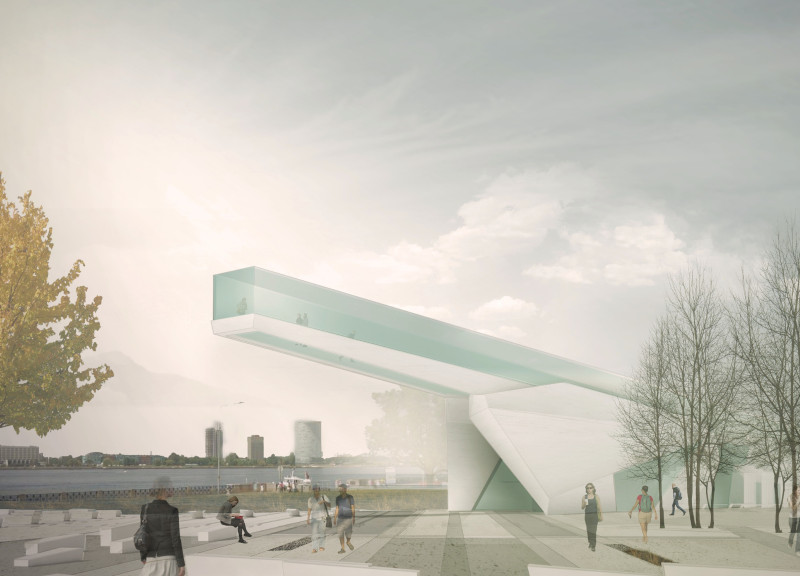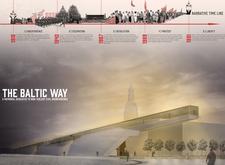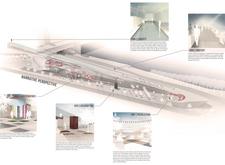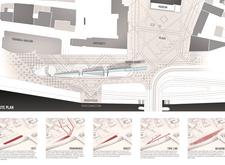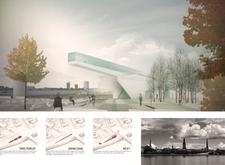5 key facts about this project
# Analytical Report on the Baltic Way Memorial Architectural Design Project
## Overview
Located in proximity to key educational and cultural landmarks, the Baltic Way memorial serves to commemorate the non-violent civil disobedience that united the Baltic States—Estonia, Latvia, and Lithuania—during their pivotal struggle for independence from the Soviet Union. The design captures significant historical moments from 1918 to 1991 through a carefully organized spatial strategy, facilitating remembrance and engagement with the shared history of these nations.
## Spatial Strategy
The memorial features a linear pathway that symbolizes the "human chain" formed during the protests, providing a physical connection between the three Baltic states. Each section of the pathway corresponds to distinct phases of the historical narrative, allowing visitors to engage with the events marked by independence, occupation, revolution, protest, and liberty. This arrangement fosters exploration and reflection, guiding individuals along a timeline of collective memory while emphasizing continuity and unity among the nations.
### Visibility and Accessibility
Strategically positioned to enhance visibility and accessibility, the memorial incorporates raised platforms that offer panoramic views of the surrounding landscape and urban environment. This design choice encourages visitors to engage thoughtfully with both the memorial and its context, enriching their experience. The integration of gathering spaces within the layout facilitates communal reflection, inviting public interaction and dialogue.
## Materiality
The choice of materials plays a crucial role in the aesthetic and structural integrity of the memorial. Reinforced concrete provides the foundational stability necessary for longevity, while glass elements introduce transparency, symbolizing openness and connection to the surrounding area. Stone pavers establish tactile walkways, grounding the memorial in its historical significance, and steel components lend modernity and resilience to the structure. These materials not only support the physical design but also resonate with the spirit and durability of the Baltic peoples.
### Symbolic and Environmental Integration
Distinct segments of the memorial represent the unity of Estonia, Latvia, and Lithuania, reinforcing the theme of collective strength against oppression. The linear path, indicative of the human chain, serves as a metaphor for solidarity, encouraging visitors to reflect on the struggles for liberty experienced by these nations. The memorial integrates harmoniously with its environment, featuring green spaces and tree plantings that provide natural shading and comfort, further enhancing the visitor experience while establishing a connection between the people and the land.


